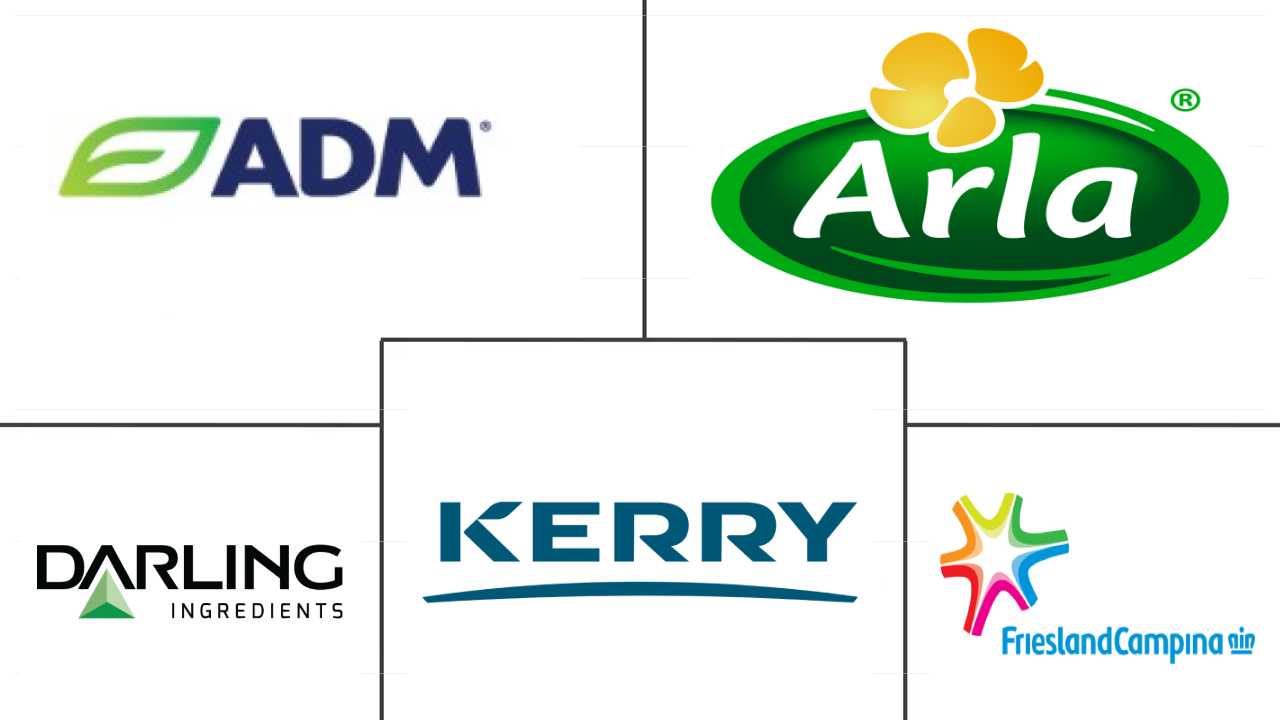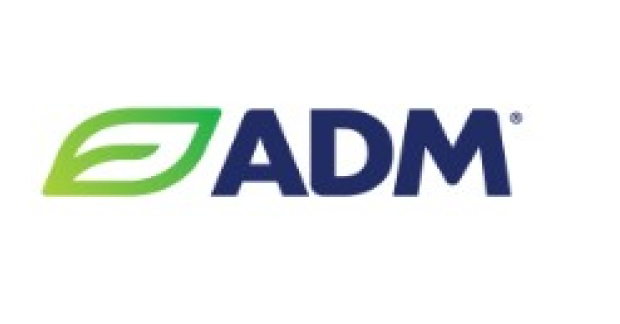Market Size of germany protein Industry
|
|
Study Period | 2017 - 2029 |
|
|
Market Size (2024) | USD 762.6 Million |
|
|
Market Size (2029) | USD 944.1 Million |
|
|
Largest Share by End User | Food and Beverages |
|
|
CAGR (2024 - 2029) | 4.36 % |
|
|
Fastest Growing by End User | Supplements |
Major Players |
||

|
||
|
*Disclaimer: Major Players sorted in no particular order |
Germany Protein Market Analysis
The Germany Protein Market size is estimated at 762.6 million USD in 2024, and is expected to reach 944.1 million USD by 2029, growing at a CAGR of 4.36% during the forecast period (2024-2029).
762.6 Million
Market Size in 2024 (USD)
944.1 Million
Market Size in 2029 (USD)
4.51 %
CAGR (2017-2023)
4.36 %
CAGR (2024-2029)
Largest Market by Source
60.41 %
value share, Plant, 2023
Immense availability, functionality, vegan protein source, and low price of soy, wheat, and pea have contributed to the leading position of plant proteins in the country.
Largest Market by End User
49.48 %
value share, Food and Beverages, 2023
The F&B industry dominates the market, primarily led by bakery and meat and dairy alternatives due to their functionalities that make them highly preferred ingredients.
Fastest growing Market by Source
4.50 %
Projected CAGR, Plant, 2024-2029
The surging demand for plant proteins (pea and soy protein) from beverages, breakfast cereals, and confectionery contributed to their fastest growth in the country.
Fastest growing Market by End User
5.61 %
Projected CAGR, Supplements, 2024-2029
The rising consumer focus on health and sports fitness is anticipated to drive the segment. Among all, the preference for soy in the sector is propelling segmental growth.
Leading Market Player
8.25 %
market share, Archer Daniels Midland Company, 2021

Archer Daniels Midland Company is the market leader. The company focuses on market trends like healthy snacking to extend its offerings in animal and human nutrittion.
Strategic investment by governing bodies drove the application of protein especially in F&B and animal feed
- By application, the food and beverage (F&B) segment is leading the German protein market. It accounted for a major share of 55.4% by volume, followed by animal feed holding a 39.9% share in 2022. However, the beverage sub-segment is anticipated to record the fastest CAGR of 7.22%, by volume, during the forecast period, as Germans are known for their preference for fizzy drinking water and fruit juices, drinks, and nectars with added proteins.
- In the F&B segment, the meat/poultry/seafood and meat alternative products sub-segment accounted for the major share by volume in 2020, followed by the dairy and dairy alternative products sub-segment. As meat alternatives record increased demand, the German government invested around USD 780,000 in 2018 in research projects such as 'Texturing Mechanisms in the Wet Extrusion of Soy and Pea Protein,' aimed at making the texture of vegan meat more 'realistic' with the use of soy and pea proteins.
- The market growth is primarily driven by the rising number of vegan and flexitarian consumers increasingly relying on or being open-to animal-free product offerings. As of 2020, the number of vegans in Germany had doubled from 1.3 million to 2.6 million, representing 3.2% of the population.
- The sports/performance nutrition supplement sub-segment is projected to be the fastest-growing end-user application with a CAGR value of 6.28% during the forecast period 2023-2029. For instance, according to the global health and fitness association IHRSA, since 2016, the number of fitness club members in Germany increased by 14% to reach 64.76 million in 2019. In 2021, North Rhine-Westphalia had the most sports clubs among German states, numbering around 18,000, followed by Bavaria with 11,725 and Baden-Württemberg with 11,274.
Germany Protein Industry Segmentation
Animal, Microbial, Plant are covered as segments by Source. Animal Feed, Food and Beverages, Personal Care and Cosmetics, Supplements are covered as segments by End User.
- By application, the food and beverage (F&B) segment is leading the German protein market. It accounted for a major share of 55.4% by volume, followed by animal feed holding a 39.9% share in 2022. However, the beverage sub-segment is anticipated to record the fastest CAGR of 7.22%, by volume, during the forecast period, as Germans are known for their preference for fizzy drinking water and fruit juices, drinks, and nectars with added proteins.
- In the F&B segment, the meat/poultry/seafood and meat alternative products sub-segment accounted for the major share by volume in 2020, followed by the dairy and dairy alternative products sub-segment. As meat alternatives record increased demand, the German government invested around USD 780,000 in 2018 in research projects such as 'Texturing Mechanisms in the Wet Extrusion of Soy and Pea Protein,' aimed at making the texture of vegan meat more 'realistic' with the use of soy and pea proteins.
- The market growth is primarily driven by the rising number of vegan and flexitarian consumers increasingly relying on or being open-to animal-free product offerings. As of 2020, the number of vegans in Germany had doubled from 1.3 million to 2.6 million, representing 3.2% of the population.
- The sports/performance nutrition supplement sub-segment is projected to be the fastest-growing end-user application with a CAGR value of 6.28% during the forecast period 2023-2029. For instance, according to the global health and fitness association IHRSA, since 2016, the number of fitness club members in Germany increased by 14% to reach 64.76 million in 2019. In 2021, North Rhine-Westphalia had the most sports clubs among German states, numbering around 18,000, followed by Bavaria with 11,725 and Baden-Württemberg with 11,274.
| Source | ||||||||||||
| ||||||||||||
| ||||||||||||
|
| End User | |||||||||||||
| Animal Feed | |||||||||||||
| |||||||||||||
| Personal Care and Cosmetics | |||||||||||||
|
Germany Protein Market Size Summary
The Germany Protein Market is experiencing significant growth, driven by increasing consumer demand for protein-rich products across various sectors. The food and beverage segment, particularly the beverage sub-segment, is leading the market due to the rising popularity of fizzy drinks and fruit juices with added proteins. The demand for meat alternatives is also on the rise, supported by government investments in research to enhance the texture of vegan meat products. This shift is largely attributed to the growing number of vegan and flexitarian consumers in Germany. The sports and performance nutrition segment is projected to be the fastest-growing application, reflecting the country's robust fitness culture and the increasing consumption of protein supplements like whey and casein.
Germany's dairy and meat production industries play a crucial role in the protein market, with the country being a leading producer of milk and pork in Europe. The dairy sector benefits from a large number of cows and advanced farming practices, while the meat industry maintains high standards in breeding and processing. The market is characterized by a fragmented landscape with major players like Archer Daniels Midland Company, Arla Foods AmbA, and others holding significant shares. Innovations in protein products, such as Arla Foods' MicelPure‚Ñ¢, are catering to the health-conscious population, further driving market expansion. The country's free trade policies and absence of extra tariffs have also bolstered its position as a leading exporter of protein products.
Germany Protein Market Size - Table of Contents
-
1. MARKET SEGMENTATION (includes market size in Value in USD and Volume, Forecasts up to 2029 and analysis of growth prospects)
-
1.1 Source
-
1.1.1 Animal
-
1.1.1.1 By Protein Type
-
1.1.1.1.1 Casein and Caseinates
-
1.1.1.1.2 Collagen
-
1.1.1.1.3 Egg Protein
-
1.1.1.1.4 Gelatin
-
1.1.1.1.5 Insect Protein
-
1.1.1.1.6 Milk Protein
-
1.1.1.1.7 Whey Protein
-
1.1.1.1.8 Other Animal Protein
-
-
-
1.1.2 Microbial
-
1.1.2.1 By Protein Type
-
1.1.2.1.1 Algae Protein
-
1.1.2.1.2 Mycoprotein
-
-
-
1.1.3 Plant
-
1.1.3.1 By Protein Type
-
1.1.3.1.1 Hemp Protein
-
1.1.3.1.2 Pea Protein
-
1.1.3.1.3 Potato Protein
-
1.1.3.1.4 Rice Protein
-
1.1.3.1.5 Soy Protein
-
1.1.3.1.6 Wheat Protein
-
1.1.3.1.7 Other Plant Protein
-
-
-
-
1.2 End User
-
1.2.1 Animal Feed
-
1.2.2 Food and Beverages
-
1.2.2.1 By Sub End User
-
1.2.2.1.1 Bakery
-
1.2.2.1.2 Beverages
-
1.2.2.1.3 Breakfast Cereals
-
1.2.2.1.4 Condiments/Sauces
-
1.2.2.1.5 Confectionery
-
1.2.2.1.6 Dairy and Dairy Alternative Products
-
1.2.2.1.7 Meat/Poultry/Seafood and Meat Alternative Products
-
1.2.2.1.8 RTE/RTC Food Products
-
1.2.2.1.9 Snacks
-
-
-
1.2.3 Personal Care and Cosmetics
-
1.2.4 Supplements
-
1.2.4.1 By Sub End User
-
1.2.4.1.1 Baby Food and Infant Formula
-
1.2.4.1.2 Elderly Nutrition and Medical Nutrition
-
1.2.4.1.3 Sport/Performance Nutrition
-
-
-
-
Germany Protein Market Size FAQs
How big is the Germany Protein Market?
The Germany Protein Market size is expected to reach USD 762.64 million in 2024 and grow at a CAGR of 4.36% to reach USD 944.14 million by 2029.
What is the current Germany Protein Market size?
In 2024, the Germany Protein Market size is expected to reach USD 762.64 million.

